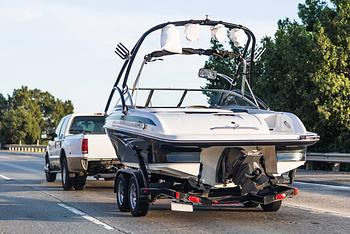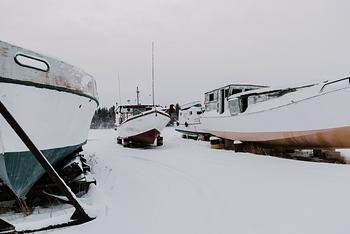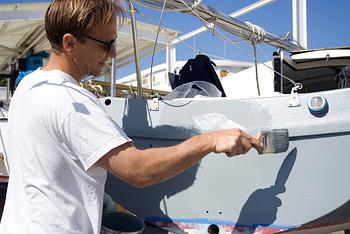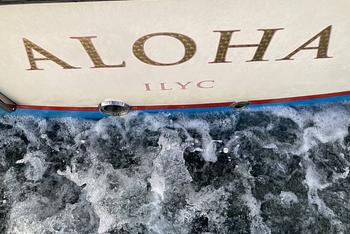Lazy days on the water are one of the best things about summer. No one is rushing anywhere, and why would you want to if the sun’s out, you’ve found a great spot for food, wine or watching fireworks and everyone’s having a great time.
But if you got caught coming back from somewhere after dark, could you navigate yourself out of and into a marina, harbour or port confidently and safely?
Pilotage changes once night falls and requires more advanced skippering skills. So how can you make sure you, your boat and passengers have an incident-free return home once darkness has descended?
“You might go out in daylight in surroundings you’re totally comfortable with,” explains Rachel Andrews, RYA Chief Instructor Motor Cruising Boats, and Power Boats.
“But at night even experienced boaters can lose their bearings if there are extra traffic and lots of lights on the water, transits and markers ashore have become difficult to spot, the visibility’s changed or you haven’t checked what the tide is doing.
“Being able to navigate in these circumstances to avoid collisions with static objects or other vessels, running aground or risking injury to anyone aboard takes daytime pilotage skills up a level. But being prepared and having confidence in your skills means you can enjoy being out later and make much more of your summer boating.”

The importance of a plan
Regardless of whether you are driving at day or night, as skipper there are certain things you must be aware of and understand with regards to pilotage. These include buoyage, distinct structures ashore, varying depths, any distinctive shoreline and tidal considerations you might encounter en route to the harbour or marina.
You must also recognize what pilotage techniques you could utilize to enter your final destination, depending on what is available, what the risks are and taking into account any port or harbour regulations.
These pilotage techniques can include a combination of using transits, creating clearing lines and bearings to define safe or dangerous areas, back or head bearing to stay on your intended track, cross-bearing to help identify a turning point, depth and contour lines and speed, time and distance.
Getting a real feel for how to use your chartplotter and radar is also going be beneficial, but it is equally important to understand the limitations of using Global Navigation Satellite System (GNSS) receivers in pilotage.
A chartplotter unit can only be assumed to be accurate to 15m 95 percent of the time, which when navigating in a narrow channel into a harbour could lead you into real danger. This is why having a pilotage plan that lifts key details from the paper chart and almanac and identifies the key landmarks and dangers on entry alongside it is crucial. Drawing the plan and putting it in a waterproof wallet can also help commit it to memory, especially if you are in unfamiliar surroundings.
But, even if you are navigating in an area you are extremely familiar with, doing it at night can change the landscape completely. For a start, can you even see the transits, structures and shoreline features you use for guidance when it is light?
Navigating at night also requires that you can quickly identify buoyage and lit features from their light characteristics. The color, number of flashes, and the time period of each sequence will vary so do you know what they all mean?
Identifying the characteristics of a light when afloat and then finding that light on the chart can also be difficult. This is another reason why preparing a pilotage plan before going afloat can really help you prepare for the unusual or unexpected.
Rachel continues: “Even in normal night-time pilotage circumstances, lights that are ashore can be easily confused with those afloat.
“But add in the fact there might be lots of boats leaving an event, be it fireworks or an air display for example, all at the same time and all lit up, with large numbers of ferries (see also Ships and Commercial Boats)and pleasure boats moving people around the harbour, and cars moving in surrounding car parks, spotting lights amongst the back-scatter is more testing.
“There is also the temptation to feel safety in numbers and follow the pack of navigation lights heading in the same direction as the boats funnel out of or into a harbour. But that can be dangerous too, especially if you can’t identify where the channel is, for example, and you find yourself lodged on a sandbar.
“Being able to keep a proper lookout and identify lit marks and nominated positions by night is a core skill in advanced pilotage.”

Safety first
Having confidence in your ability to pilot safely after dark is a massive factor in ensuring the safety of all on board. However, the unexpected can still arise and at night incidents can be much more dramatic than if they happened during the day.
For pleasure vessels less than 13.7m in length there are no statutory requirements for safety equipment other than those required under SOLAS V.
But common sense dictates it is essential your boat is properly equipped, and this equipment is checked regularly for wear and tear, before heading afloat and that you always wear your kill cord when the engine is running.
Depending on the area of operation or type of boat, it can be mandatory for boats of this size to carry radar reflectors, lifesaving signals, navigation lights, day shapes and sound signaling equipment, a lifejacket or buoyancy aid for everyone on board and firefighting equipment. There is a whole host of other recommended and discretionary safety equipment that should also be considered.
Now, does the equipment you are carrying aid rescue in the dark? Do your lifejackets or buoyancy aids, for example, have a light on? Also in an emergency and/or if the skipper is the casualty, could others on board raise the alarm? Showing passengers how to use the MOB function on your chartplotter could help the rescue effort.
Rachel concludes: “You might only be a mile from your home mooring and think ‘why is that difficult or dangerous?’ But add in all the factors that can come into play on a summer’s evening and it underlines why having a pilotage plan is important.
“We want people to feel confident using their boats all year round in a variety of conditions. What better time to make the most of your skippering skills than at this time of year?”
*You can develop your night-time driving skills through the RYA Advanced Powerboat or the RYA Advanced Pilotage (Motor Cruising) courses(Check out our Pilothouse Boats to get some inspiration). For details visit https://www.rya.org.uk/training
Related Articles and Guides
29th Mar 2024
How to Transport Your Boat Four Different Ways
18th Oct 2023
How to Winterize a Boat: Steps, Checklist and Costs
20th Sep 2023
Painting a Fiberglass Boat: A Detailed Guide
19th Sep 2023







